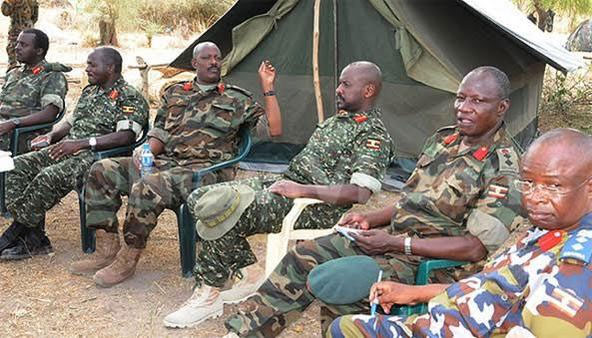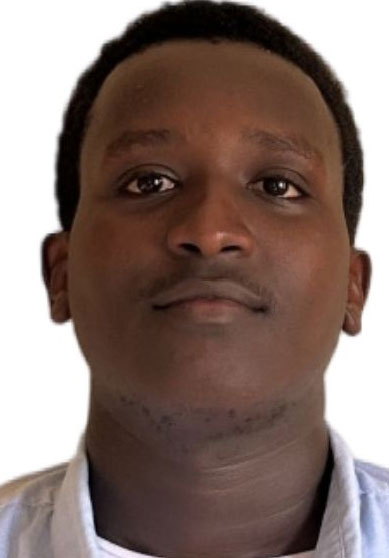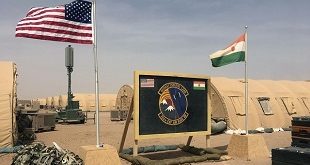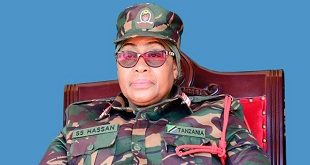
COMMENT | TIGUSHAMWA AYEBARE | The recently concluded Russia-Africa summit was-in many ways-only but a curtain raising act for the Ugandan delegation. On account of government reportage in Uganda, Moscow was only a pit stop on a trip destined for a much smaller capital in Eastern Europe, Belgrade. It was here that the president, flanked by his senior advisors and a number of cabinet ministers launched a small shop at the Woodrow Wilson Boulevard in Belgrade called the Uganda Connect after signing a number of bilateral agreements with the Serbian government.
This Uganda Connect shop is part of a broader initiative by the Presidential Advisory Committee on Exports and Industrial Development to increase national exports to the USD 6 billion mark by 2027. It was conceived as a trade hub for goods destined for European markets. But Serbia, of all places, was for all purposes and intents an interesting choice for a trade partner. Its economy and population are too small in comparison to other major export destinations in Europe making it clear that its selection as home to a ‘major’ trade hub was informed by reasons other than GDP and market size.
Since there is symbolic power in diplomatic practice, a seemingly bizarre phenomenon which cuts across from the tone of communiques to the choice of tie colour worn by a head of state, it would not be beyond purview to assert that perhaps the next leader of the Non-Aligned Movement went to Belgrade to pay diplomatic homage to the city where the first summit took place in 1961.
Uganda is hosting the 19th NAM summit in January of 2024 under the theme of “Deepening Cooperation for Shared Global Affluence” which automatically qualifies it to become the movement’s next leader for a period of three years.
In this article I attempt to map out what our strategy as a country should be, given the prevailing global events related to the movement at continental and global level.
The Dilemma of Non-Alignment
One of the most visible attributes and glaring fault lines of the non-aligned movement is how it is often defined first by the conditions for its membership and only after by its intended objectives. Historically, as a collective of ‘non-bloc’ and ‘neutral’ countries, there was not much consistency in the interests of member states and those of the bloc, if any. All that seemed to matter was that a number of countries mostly from the global south stated their allegiance to a middle ground upon which they could neither publicly side with the US and its western allies or the Soviet Union and its eastern allies.
When the cold war came to an end, it was widely believed that ‘great power competition’ had completely come to an end or at the very least, undergone a paradigm shift. What this meant was that most of the issues that had formed the very basis of the Non-Aligned Movement’s conception had also come to an end. With its relevance waning in an increasingly different world, the movement was only left to low level economic issues, since its membership could not cohere around a common agenda.
Recently, its fortunes seem to be changing. A year and a half into the Russia-Ukraine war, there has been a significant rise in great power competition if not a full resurgence of it. Since every African country is a member of the non-aligned movement, with its leadership coming to the continent, this competition has recently presented itself in a somewhat unexpected way.
Africa sends guns to the East.
In May 2023, the US ambassador to South Africa accused his host country of supplying Moscow with arms destined for the war in Ukraine. The materiel which is alleged to have left the South African Simon’s Town naval base aboard the Lady R vessel in December 2022 was a source of tension between Washington and Pretoria. This incident, despite a retraction from the American ambassador, found an already highly charged diplomatic environment between the two countries, in part due to the ANC’s framing of the US and its Western Allies as the main cause of Russia-Ukraine crisis.
In June 2023, the US Department of State sanctioned entities and individuals connected to the Wagner Group in Africa. Two entities were from the Central African Republic, one was based in the United Arab Emirates and the other, a Russian company. They were accused of ‘involvement in activities that undermine democratic processes and institutions in CAR through illicit trade in the country’s natural resources.’
The sanctions intended to counter Wagner’s business in both CAR and Mali which was linked to the sale of illicit gold for purposes of financing the procurement of weapons and equipment to further their involvement in the hostilities in Ukraine. This was before Wagner attempted to march to Moscow.
At around the same time, the US State Department released an advisory on African Gold. It focused on local armed groups in sub-Saharan Africa and their decades-long dependence on the gold trade, particularly artisanal and small-scale gold mining (ASGM) for the financing of their activities. These armed groups are almost always affiliated to the Islamic State, Al Qaeda and Wagner, bring into play a global component in terms of the influence they project and the interests they represent. Legitimate participants in the gold industry, most of whom are sovereign countries and a few large companies, were warned of increased US government attention to the relationship between gold and these groups’ revenue streams, but, most especially the possibility of sanctions aimed at disrupting these operations.
From the aforementioned turn of events, Washington and Moscow clearly seem to be tussling, once again, on African turf. This makes it imprudent for the leadership of the non-aligned movement, for which the resolution or even avoidance of such manner of tussling was meant, to ignore or even out rightly fail to rise to the occasion at such a critical moment.
The Sudan Debacle
In the Africa gold advisory issued by the US Secretary of State, Antony J. Blinken, Sudan was an odd mention given the timing and circumstances. Whereas a number of countries in the Sahel had already been named as hotspots for this illicit gold trade, the implicit connection between Sudanese gold, the UAE, and Wagner made for a much more complicated situation considering the dynamics of the current conflict between the Sudanese Armed Forces and its paramilitary offshoot, the Rapid Support Forces.
President Museveni’s understanding of pan-Africanism is premised on two aspects. Regional economic integration and strategic security. The former is informed by the small size of African economies which can only become viable markets by merging, and the latter, is an extension of the former because only by coming together and identifying common interests, can erstwhile weak African countries defend themselves from external sources of subversion and aggression.
It is, therefore, from a perspective of strategic security that Sudan must be understood. Geopolitically, the country lies between two regions in crisis; the Sahel and the Horn of Africa and as such has acted, in the past, as a natural buffer. There are, however, two issues that interest me in this particular case.
The first is that, despite the RSF’s recent denial of ties with Wagner, reports of links between the two forces pre-date the current conflict. As far back as March 2021, there were numerous reports of Wagner providing security for gold mines in the Darfur region and going on to establish a joint command center, in that very area, with the RSF.
Secondly, the UAE, which happens to be a major destination for most of this gold, is also reported to be RSF’s largest arms supplier, even if its supplies SAF as well-to a lesser extent. Their working relationship dates back to 2015 when a Sudanese contingent of mostly RSF fighters fought alongside Emirati and Saudi forces in Yemen against the Houthi rebels. In fact, it was precisely because of this military campaign that the RSF grew to 70,000 troops with numerous infantry capabilities.
All this goes to show that the resolution of the crisis in Sudan achieves two objectives; it maintains a buffer between the Sahel and the Horn but also provides the non-aligned movement a window into the Middle East and the great power competition happening at that level, working its way to Kyiv. This would make for a decent attempt at revitalizing the global relevance of the Non-Aligned Movement.
Another opportunity arises from the shortcomings of previous mediation efforts from IGAD. SAF delegates have previously expressed distrust towards the current IGAD chief, Kenyan President, William Ruto and increasingly mooted the idea of Salva Kiir as a more tenable option.
South Sudan, whose economy is heavily reliant on oil, depends on a single major pipeline destined for Port Sudan and is therefore very interested in the political situation in Khartoum.
As fate would have it, the governments in Kampala and Juba boast of very rich historical ties owing to NRA’s support toward SPLM in the late 80s and 90s in its liberation struggle against the Khartoum government. A more recent 2013 coup attempt by forces hostile to President Salva Kiir was repelled by an entire UPDF brigade that had made its way to Juba. In fact, there already is a Peace Monitoring and Verification Mechanism in South Sudan headed by Ugandan Military and Intelligence Chiefs upon which a Sudan solution can be modelled.
Currently, South Sudan is the youngest member of the Non-Aligned Movement following its admission in July 2023 at a meeting in Azerbaijan. Should it take on the mediation role, it stands a greater chance of success, doing so whilst adorned in the diplomatic garb of the Non-Aligned Movement, with a Summit Chair in Kampala.
*****
 The writer is a foreign affairs observer based in Kampala
The writer is a foreign affairs observer based in Kampala
 The Independent Uganda: You get the Truth we Pay the Price
The Independent Uganda: You get the Truth we Pay the Price


